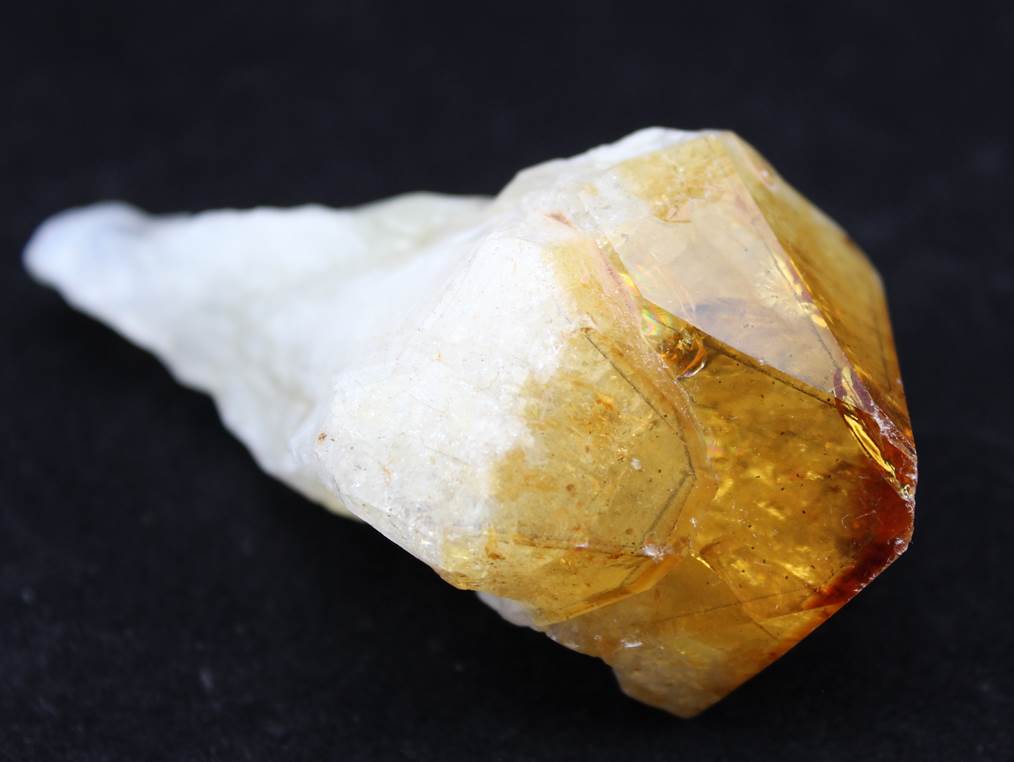
According to this scale, a stone can scratch any other mineral with a lower score.

If you’re unfamiliar, the Mohs scale of hardness determines a stone’s hardness by measuring how scratch-resistant it is. Hardnessīoth stones rate 7 on the Mohs scale, just like other forms of quartz. Both stones’ range from transparent to translucent and have no evident cleavages. Natural citrine (left), heat-treated citrine (middle), amethyst (right) Pattern and ClarityĪs amethyst and citrine are basically the same stone, they have the same clarity as well. The phenomenon results in a stone named ametrine. In some occurrences, citrine and amethyst can occur together in one crystal. Natural citrine is one color all throughout, whereas heat-treated citrine will have a white base color. Natural citrine is pale orange or yellow with brown to dark brownish tints.Īpart from its color, you can look at the base color of the crystal to determine if it’s natural or heat-treated citrine. The citrine produced is golden with brown to dark brownish tints. This can be done by the Earth’s mantle (natural citrine) or by sellers (heat-treated citrine).Įven natural citrine can sometimes be heat treated by sellers, as natural citrine is pale and heating intensifies the color. On the other hand, citrine is created when amethyst or smoky quartz is heated to high temperatures to produce a yellow quartz. The most valuable amethyst variety is the deep Siberian amethyst whose primary hue ranges from 75-to 80%.Īmethyst will also display blue or red secondary hues dependent on the light they are viewed on and fade color when overly exposed to light or heat sources.Īlso Read: Pink Amethyst vs.

Amethyst colors range from light to dark purple and on some occasions pink. The crystal’s color variety is a result of trace elements, iron, and transition metals within its structure. ColorĪmethyst comes in different shades of purple. However, there are also other physical differences. The easiest way to spot the difference between these two stones is by looking at the color.
#PROPERTIES OF HEAT TREATED AMETHYST HOW TO#
Heat Treated Amethyst vs Citrine – How To Tell The Difference? Heat Treated Amethyst vs Citrine – (Metaphysical) Properties.Heat Treated Amethyst vs Citrine – How To Tell The Difference?.
#PROPERTIES OF HEAT TREATED AMETHYST FREE#
Want more help or information? If you have any more questions after reading this blog post or want a personal answer for your specific situation, join the free Facebook group! We promise that you’ll get an answer from either our team members or a community member. Join the group here! The only real difference is the result of the change in color.Īlso Read: Amethyst vs. Some were heated by the Earth’s mantle, others by a person, but all citrine is heat-treated amethyst or smoky quartz.īecause this treatment does not affect its chemical makeup, citrine and amethyst have very similar metaphysical properties. The metaphysical properties change as a result of the treatment.Ĭitrine is often misunderstood – only natural citrine is often seen as ‘real’ citrine when in reality, whether natural or man-made, both stones receive the same treatment. Heat-treated amethyst is often bright yellow. Natural citrine is rare, expensive, and has a pale yellow color. This can happen naturally, but more often it is done by sellers. In order to make citrine, amethyst (or smoky quartz) is heated to about 900 degrees Fahrenheit. Then, what’s the difference between (heat-treated) amethyst and citrine? They are both quartz and have the same chemical makeup. Though amethyst and citrine look different, they are actually very similar.


 0 kommentar(er)
0 kommentar(er)
